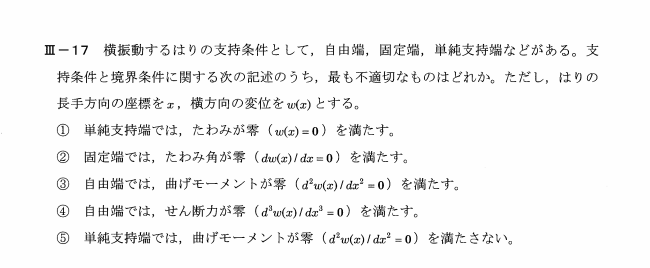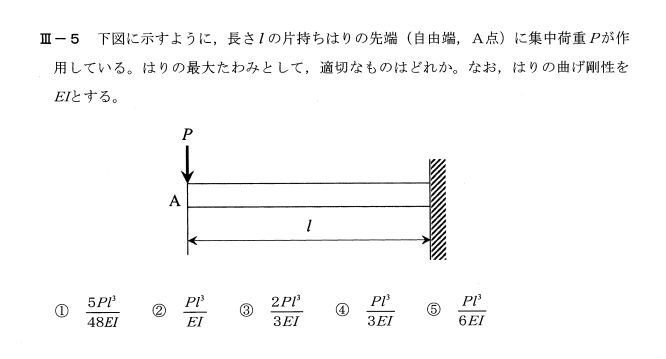翻訳
Air conditioners give you much-needed
thermal comfort during a scorching summer.
More specifically, air conditioners help
to maintain the room temperature at the optimum level.
They also help remove airborne particles
and humidity from the room.
Let's find out how these devices work.
We want to thank Danfoss for their support
in the production of this video.
You can increase your knowledge about cooling systems
by accessing the free e-lessons
available at Learning.Danfoss.com.
Let's start with a very simple approach
to understanding the functioning of an air conditioner.
An air conditioner has two connected coils
with continuously flowing refrigerant fluid inside them.
The coil inside the room is called the evaporator
and the coil outside the room is called the condenser.
The fundamental principle of an air-conditioner is simple.
Just keep the evaporator cold,
more specifically colder than the room temperature
and the condenser hot,
more specifically hotter than the surroundings.
With these conditions, the continuously flowing fluid
will obviously absorb the heat from the room
and eject it out to the surroundings.
This is the fundamental rule of an air conditioner.
Let's see how this rule is implemented in practice.
To achieve this objective, two more components
are needed inside your air conditioner,
a compressor and an expansion valve.
As you can probably guess,
the compressor increases the pressure of the refrigerant.
Here, you can see a working example
of a reciprocating type compressor.
The compressor handles the refrigerant
in its gaseous state so that as it compresses the gas,
the temperature rises along with the pressure.
The temperature at the compressor outlet
will be far higher than the atmospheric temperature.
Therefore, if you pass this hot gas
through the condenser heat exchanger,
you can easily eject the heat.
A fan in the condenser unit makes this task easier.
During this heat ejection phase,
the gas gets condensed to a liquid.
An expansion valve is fitted at the exit of the condenser.
The purpose of the expansion valve
is to restrict the refrigerant flow,
thus reducing the pressure of the fluid.
Here comes the main trick.
You might be aware that it is possible to boil
a liquid just by reducing the pressure around it.
This phenomenon happens inside the expansion valve as well.
As the pressure drops,
one part of the refrigerant liquid is evaporated.
However, for this evaporation to happen,
some energy should be supplied to it.
This energy comes from within the refrigerant
so its temperature drops.
This is how the cold refrigerant is produced
inside an air conditioner.
This low temperature refrigerant
should be at a temperature lower than the room temperature.
So by passing the room's air over the evaporator coil,
the room temperature will drop.
The refrigerant gets converted to vapor
during this heat absorption process.
You might have heard a term called ton
associated with the air conditioners.
The ton represents how much heat the evaporator
can absorb from the room.
In simple words, it represents
an air conditioner's heat removal capability.
In this way we have achieved
the fundamental rule of an air conditioner.
The temperature is lower than the room temperature
in the coil inside the room
and the temperature is more
than the atmospheric temperature
in the coil outside the room.
In an actual air conditioner,
the compressor sits near to the condenser
and the expansion valve sits near to the evaporator.
There are some practical issues with this design.
Near to the evaporator coils,
the air temperature will be quite low.
This will lead to water condensation
on the evaporator coils.
That's why we need a pipe
to remove this water condensate.
Modern air conditioners use scroll compressors
instead of the reciprocating type.
You can see how the compression process happens
from this animation.
They are silent and they have good speed control.
Do you know how your air conditioner
is able to maintain an almost steady room temperature
irrespective of the load?
Modern air conditioners use a variable
speed motor technology called inverter technology
for better temperature control.
Just by adjusting the motor speed,
the compressor speed, the refrigerant flow rate,
and the cooling capacity can be controlled accurately.
Here comes an interesting design challenge
for the air conditioner.
The compressor of an air conditioner is designed
to handle only vapor and a small fraction of liquid content
can affect its performance and damage the compressor.
For these reasons, it is desired that the evaporator
convert all of the liquid to vapor
and even increase the temperature of the vapor
by five to eight degrees celsius after the conversion.
How does it make sure that the fluid
which enters the compressor is purely vapor?
This condition is maintained
by a special kind of expansion valve
called a thermostatic expansion valve.
The abbreviation is TXV.
The TXV is similar to the expansion valve we saw earlier
but here the temperature of a bulb controls the needle.
The bulb is connected to the evaporator exit.
The refrigerant inside the bulb is separated
from the main refrigeration cycle by a diaphragm.
When the bulb is hot, the refrigerant inside it
will be evaporated and the needle will move down.
We know the sudden cooling of the refrigerant
is achieved across the expansion valve
with the help of the restriction.
The narrower the restriction,
the cooler the outlet refrigerant will be.
Let's consider a bad situation for the compressor.
Assume the evaporator temperature is not so low,
so the evaporator absorbs very low heat
and all the liquid in it will not be converted to vapor.
Thus, the refrigerant, which leaves for the compressor,
will not be superheated.
This low temperature at the evaporator exit
will immediately be sensed by the ball
and will cause the needle to move upwards
and make the restriction narrower.
The narrow restriction causes a good temperature drop,
thus the evaporator will receive much cooler fluid
and it can absorb a great amount of heat.
This will make sure that all the liquid
will be converted to vapor.
Thus, the complex task of having a vapor only condition
at the compressor inlet
is automatically maintained by the TXV.
Let us clear up a common misconception at this stage.
TXVs do not control the room temperature,
they just make sure that the compressor
receives the refrigerant in pure vapor form.
The refrigerant flow rate and the room temperature
are controlled by the speed of the compressor.
Due to their simplicity and efficiency,
TXVs are widely used in the industrial
and domestic applications.
To learn more about TXVs
and hundreds of other cooling topics,
please check out Danfoss Learning,
a free training and certification hub
brought to you by Danfoss.
Visit Learning.Danfoss.com
or click the link in the video description.
Thank you!
暑い夏を快適に過ごすためには、エアコンが必要です。
暑い夏を快適に過ごすことができます。
具体的には、部屋の温度を最適に保つために
室温を最適な状態に保つことができます。
また、空気中の粒子や湿度を除去することで
湿気を取り除いてくれます。
その仕組みをご紹介します。
このビデオの制作には、ダンフォス社の協力を得ました。
このビデオの制作にご協力いただきました。
冷却システムに関する知識を深めるために
無料のe-レッスンをご利用ください。
Learning.Danfoss.comでご覧いただけます。
エアコンの機能を理解するための非常にシンプルなアプローチから始めましょう
エアコンの機能を理解するために、非常に簡単なアプローチから始めましょう。
エアコンには2つの連結されたコイルがあります。
その中には連続的に冷媒が流れています。
部屋の中にあるコイルを「エバポレーター」、部屋の外にあるコイルを「エバポレーター」と呼びます。
部屋の外にあるコイルを「コンデンサー」と呼びます。
エアコンの基本原理は簡単です。
蒸発器を冷やせばよい。
具体的には、蒸発器を部屋の温度よりも冷たくして
蒸発器を冷やし、凝縮器を温めればよい。
具体的には、周囲の温度よりも高くします。
この状態では、連続して流れる流体が
明らかに室内の熱を吸収し
周りに放出する。
これがエアコンの基本ルールです。
では、この法則が実際にどのように実現されているのかを見てみましょう。
この目的を達成するために、エアコン内部にはさらに2つの部品
エアコンの内部には
コンプレッサー」と「膨張弁」です。
想像できると思いますが
コンプレッサーは冷媒の圧力を高めます。
ここでは、レシプロ式圧縮機の動作例をご覧いただけます。
ここでは、レシプロタイプのコンプレッサーを紹介します。
コンプレッサーは、冷媒を気体の状態で扱うため
気体の状態で扱うので、気体を圧縮すると、圧力とともに温度が上昇します。
温度は圧力とともに上昇します。
コンプレッサーの出口の温度は
は大気温度よりもはるかに高い温度になります。
そのため、この高温のガスをコンデンサーの熱交換器に通すと
凝縮器の熱交換器を通せば
簡単に熱を逃がすことができます。
この作業を容易にするのが、コンデンサーユニット内のファンです。
この熱放出の段階で
ガスは凝縮して液体になります。
凝縮器の出口には、膨張弁が取り付けられています。
膨張弁の目的は
膨張弁の目的は、冷媒の流れを制限して
膨張弁の目的は、冷媒の流れを制限して液体の圧力を下げることです。
ここからが本題です。
液体の周囲の圧力を下げるだけで、液体を沸騰させることができるのはご存知でしょうか。
液体を沸騰させることができるのはご存知でしょう。
この現象は、膨張弁の中でも起こっています。
圧力が下がると
冷媒の液体の一部が蒸発します。
しかし、この蒸発が起こるためには
蒸発させるためには、何らかのエネルギーを与える必要があります。
このエネルギーは冷媒の中からやってくるので
冷媒の温度が下がるのです。
これがエアコンの中で冷たい冷媒が作られる仕組みです。
エアコンの中では
この低温の冷媒は
室温よりも低い温度になっているはずです。
そこで、エバポレーター・コイルに部屋の空気を通すことで
室温が下がります。
冷媒は、この熱吸収の過程で蒸気になります。
冷媒はこの熱吸収の過程で蒸気に変わります。
エアコンには「トン」という言葉があります。
という言葉を聞いたことがあるかもしれません。
トンとは、蒸発器が室内の熱をどれだけ吸収できるかを表しています。
部屋からどれだけの熱を吸収できるかを表しています。
簡単に言うと、エアコンの除熱能力を表しています。
エアコンの熱除去能力を表しています。
このようにして、エアコンの基本ルールである
エアコンの基本ルールを実現しました。
室温よりも低い温度の
室内のコイルの温度が室温より低く
気温よりも高い温度
室外のコイルでは大気温度よりも
室外のコイルでは大気温度以上になります。
実際のエアコンでは
凝縮器の近くには圧縮機があり
膨張弁はエバポレーターの近くにあります。
この設計には、実用上の問題があります。
蒸発器コイルの近くでは
空気の温度はかなり低くなります。
蒸発器コイルの近くでは、空気の温度が非常に低くなり、蒸発器コイルに水が結露します。
蒸発器コイルに水が結露してしまいます。
そのため、この凝縮水を除去するためのパイプが
この凝縮水を除去するためのパイプが必要なのです。
最近のエアコンは、レシプロ式ではなくスクロール式の
最近のエアコンは、レシプロ式ではなくスクロール式を採用しています。
このアニメーションを見ると、圧縮の仕組みがよくわかります。
このアニメーションで見ることができます。
音も静かで、回転数のコントロールも優れています。
エアコンがどのようにして
ほぼ一定の室温を保つことができるのは
ご存知ですか?
最近のエアコンには、インバータ技術と呼ばれる可変速モーター技術が使われています。
インバーター技術と呼ばれる可変速モーター技術を
使っています。
モーターの回転数を調整するだけで
コンプレッサーの回転数、冷媒の流量を正確にコントロールできます。
冷房能力を正確にコントロールすることができます。
ここで、エアコンには面白いデザイン上の挑戦があります。
エアコンの設計上の課題です。
エアコンのコンプレッサーは
気体のみを扱うように設計されているため、わずかな液体が含まれると
その性能に影響を与えたり、コンプレッサーを損傷したりする可能性があります。
これらの理由から、蒸発器は液体をすべて蒸気に変えることが望まれます。
すべての液体を蒸気に変え
蒸気の温度を5〜8℃上げることも可能です。
の温度を5〜8℃上げることが望まれます。
コンプレッサーに入る液体が純粋な蒸気であることを、どのようにして
どのようにしてコンプレッサーに入る液体が純粋な蒸気であることを確認するのでしょうか?
この状態を維持するのが
サーモスタット膨張弁と呼ばれる特殊な膨張弁で
サーモスタティック・エクスパンション・バルブといいます。
略称は「TXV」。
TXVは、先ほどの膨張弁と似ていますが
が、ここでは電球の温度で針を制御します。
バルブはエバポレーターの出口に接続されています。
電球の中の冷媒は
ダイヤフラムによってメインの冷凍サイクルから分離されています。
電球が熱くなると、中の冷媒が蒸発して
が蒸発し、針が下降します。
冷媒の急激な冷却は、膨張弁
冷媒の急激な冷却は、膨張弁を介して
制限の助けを借りて、冷媒の急激な冷却が行われます。
制限が狭ければ狭いほど
排出される冷媒はより冷たくなります。
コンプレッサーにとって悪い状況を考えてみましょう。
蒸発器の温度がそれほど低くないと仮定します。
蒸発器が吸収する熱量が非常に少ないので
し、その中の液体がすべて蒸気に変わることはありません。
そのため、コンプレッサーに向かう冷媒(?
は過熱されません。
蒸発器の出口でのこの低温は、すぐにボール
はすぐにボールに感知され
ボールが感知し、ニードルが上方に移動することで
して、制限を狭くします。
制限が狭くなることで、良好な温度降下が得られます。
そのため、エバポレーターにはより低温の液体が送られることになります。
蒸発器はより冷たい液体を受け取り、大量の熱を吸収することができます。
これにより、すべての液体が蒸気に変換されるようになります。
は蒸気に変換されます。
このようにして、圧縮機の入口で蒸気のみの状態にするという複雑な作業が
コンプレッサーの入口で
TXVによって自動的に維持されます。
ここで、よくある誤解を解いておきましょう。
TXVは部屋の温度をコントロールするわけではありません。
TXVはコンプレッサーが冷媒を純粋な蒸気の形で受け取るようにするだけです。
純粋な蒸気の形で冷媒を受け取るようにするだけです。
冷媒の流量と室温は、コンプレッサーの回転数によって
冷媒の流量と室温は、コンプレッサーの回転数によって制御されます。
TXVはそのシンプルさと効率の良さから
TXVは、そのシンプルさと効率の良さから、産業用から家庭用まで幅広く使われています。
工業用や家庭用に広く使用されています。
TXVについてもっと知りたい方は
その他の冷却に関する数多くのトピックについては
ダンフォスラーニングをご覧ください。
ダンフォスが提供する無料のトレーニングと認証のハブである
Danfoss Learningをご覧ください。
Learning.Danfoss.comをご覧ください。
にアクセスするか、ビデオの説明にあるリンクをクリックしてください。
ありがとうございました。





